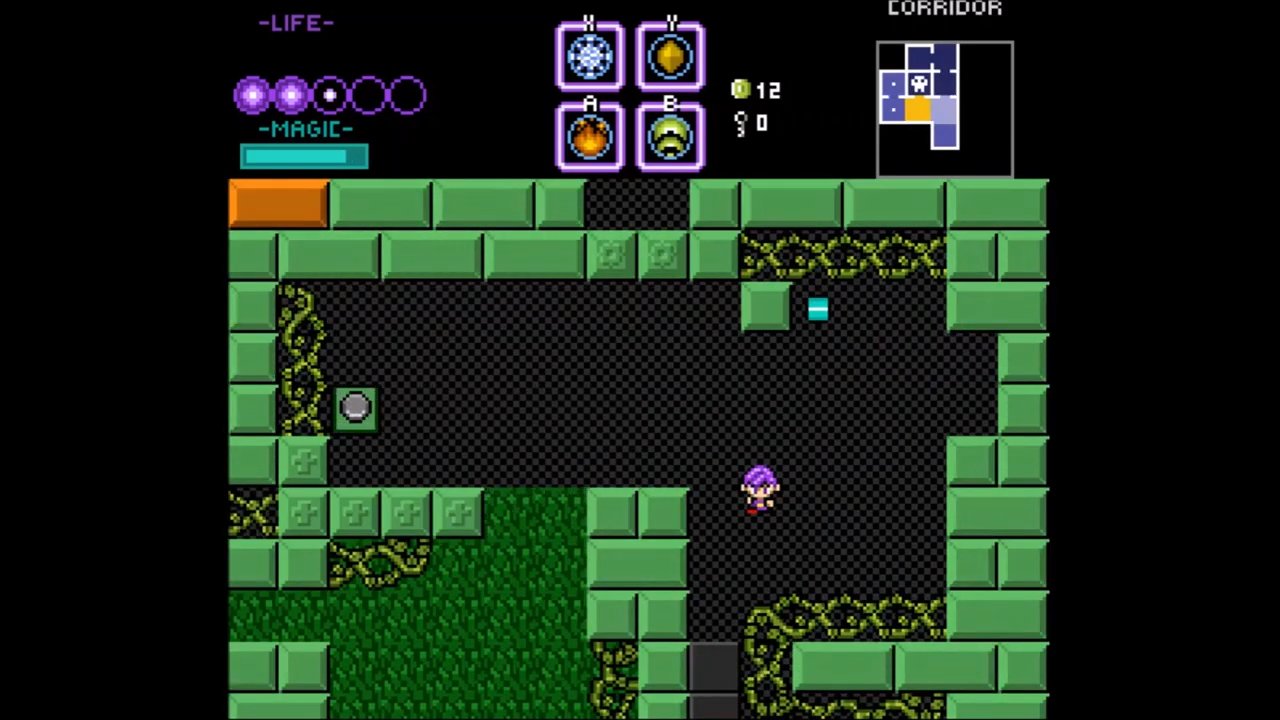Review | The Spectral Web: Hitodama - A Web Of Fangames
The Spectral Web: Hitodama is a no-nonsense video game. You play as a little guy named Hito. Your mission is to escape from a labyrinth full of tricks and traps. Every little trinket you pick up in the labyrinth, from magic spells to coins to health orbs, makes Hito stronger and unlocks new areas. Once Hito learns the ability to track missing collectables, Hitodama becomes a compulsive checklist where every marked square on the map hides a secret. The player may strike out in any direction they please in search of hidden goodies.
Once upon a time, games of this type were few and far between. Now they are everywhere. Steam is flooded with interchangeable pixel art exploration platformers in which heroes strive for 100% completion. Dozens, if not hundreds, of them are cult classics with dedicated followings. Thousands more are anonymous. Hitodama is one of these anonymous games on the surface. Dig deeper, though, and it hides a surprising secret.
Play far enough in Hitodama and you will encounter an enemy called the Witchrobe. This annoying creature appears, shoots a magic bullet at Hito and then disappears. “Hmm,” you may say, “That sounds just like the Wizzrobe from the first Legend of Zelda game.” You would be correct. Hitodama is in fact built around the constraints of the first Legend of Zelda. The dungeon you come across is presented as a procession of single screens that scroll as the player moves. Hito has both “life” and “magic” meters that he expands by finding collectables. Many rooms in the game, although not all, contain unmarked secret items and corridors.
Hitodama also diverges from the design of early Zelda in key respects. Hito is a spellcaster instead of a warrior. His arsenal is as much a Mega Man-style weapon roster as it is a Zelda toolkit, replete with elemental counters to various enemies. Hitodama at its most distinct reimagines Link as a shmup protagonist. Surviving the few challenging boss encounters necessitates weaving around overwhelming enemy fire. These bosses demand precise dodging that the controls aren’t always quite capable of facilitating. I’d call them the least successful element of the game.
In Legend of Zelda, Link could uncover secrets by detonating bombs he found around the world. Hito has no need for bombs. A wind spell is enough to explode blocks and reveal hidden pathways. To play Hitodama is to blast every corner of the map with magic in the hope of finding a way forward. This is satisfying in the moments when you blow down a wall but becomes repetitive over time. Later Zelda games gave Link movement abilities that changed up exploration. Hito only ever learns new ways to shoot things, with just a few exceptions (A word to the wise: powerful water magic lets you swim).
To give proper credit to Hitodama, the game is in some ways more flexible than the early Legend of Zelda titles. You can change the difficulty between four settings at any time, affecting not just enemy stats but their layout and behaviour. You can equip four magic spells at once, reducing time spent switching out loadouts in the menu. Beating the game unlocks two new characters and a “remixed” harder labyrinth (a Master Quest, you could say). The game itself clocks in at about seven hours, but Hitodama is built for repeated play on the player’s terms with modifiers and settings to tweak the experience.
Aevin developed the earliest version of Hitodama as a Zelda fan game. Its sequels, Yuurei and Reikon, expand upon the story of the original. Aevin’s most successful project, though, isn’t either of those. It’s Yuurand, an ambitious Yuurei randomiser that features many dozen characters, spells and bosses. In that respect, you could say that Hitodama’s true predecessor is not the well-trod ground of Metroid or Symphony of the Night. It’s the Zelda randomiser community. It’s worth noting that the game keeps track of your playtime in the main menu, a quality-of-life addition found in many randomisers. This is a speedrunner’s game through and through.
The Spectral Web: Hitodama published on Steam was remade in Godot. It includes several features that are new to this version: a useful bestiary, reimagined boss battles and spell rebalancing backported from Aevin’s later games. Hitodama is undoubtedly the first and least impressive of its trilogy. But it’s also an accessible entry point into Aevin’s oeuvre. You could jump right into Yuurand from Hitodama, although you might want to wait and see if Aevin decides to remake that game in Godot too.
I wouldn’t call Hitodama a masterpiece. I would call it idiosyncratic. It’s an exploration platformer rooted in a specific tradition, remade by a developer who learned the tools of the trade among fellow enthusiasts in the recesses of the internet. I reckon that critics and independent game developers might actually learn more from games like this–passion projects made by amateurs with distinct strengths and weaknesses–than today’s largest and most polished independent productions. Regardless, I’ll be keeping an eye on Aevin’s next project.









